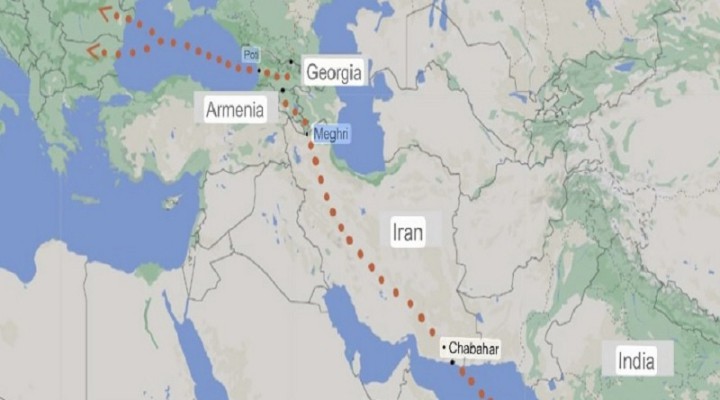The North-South Transport Corridor’s Black Sea Branch Could Help Scale Indo-European Trade

Russia isn’t pleased with being squeezed out of Armenia, but it might take some consolation knowing that this corridor could dissuade the West from exploiting Armenia to destabilize the region, which India and Iran could help it realize.
The New York Times (NYT) drew the world’s attention to the North-South Transport Corridor (NSTC) last week in their detailed piece titled “From Moscow to Mumbai: Russia Pivots South for Trade”. It was impressively balanced for a Mainstream Media outlet even though the subtext was that the West should be worried about Russia relying on this route to alleviate their sanctions pressure. These concerns could be partially allayed, however, if they learned more about India’s envisaged Black Sea branch (BSB).
The NSTC’s three existing branches connect Russia and India via the South Caucasus, Caspian Sea, and Central Asia, but India has been considering an additional branch through Armenia and Georgia to connect it with the EU via the Black Sea. Armenian Deputy Minister of Economy Narek Teryan announced during an Indian-Armenian business forum on Thursday that those two and Iran are now discussing the formal creation of a trilateral corridor between them as the latest step to that end.
While the West might shudder at the thought of Iran profiting from their trade with India through a connectivity corridor that Russia also partially relies on to alleviate their sanctions pressure, they’re powerless to stop the NSTC and should therefore explore ways to benefit from it. For starters, the BSB complements the India-Middle East-Europe Economic Corridor (IMEC) whose associated rail corridor plans have been complicated by the unexpected outbreak of the latest Israeli-Hamas war.
Just like IMEC, the BSB also avoids the Red Sea through which most Indo-European trade was previously conducted prior to the Houthis’ closing it off to most shipping in solidarity with Hamas. Even after the latest Israeli-Hamas war ends, the unresolved Yemeni War could always rekindle and lead to the Houthis closing off the Red Sea once again. There’s also the chance that a war in the Horn of Africa over Ethiopia’s peaceful port plans could break out and disrupt regional shipping as well.
And finally, the West has already lured Armenia away from Russia so the next step is to gradually re-engineer its geo-economic importance by informally incorporating it into the EU, which could be achieved by having it facilitate Indo-European trade via the BSB. While this pivot poses serious regional security risks since the West could decide to support Armenian revanchism, it might be dissuaded from destabilizing the South Caucasus if more of the EU’s trade with India is conducted across the BSB.
From Russia’s perspective, Armenia’s impending defection from the CSTO and Eurasian Economic Union is regrettable, but it would be much worse if this development plunges the region into war. For that reason, the Kremlin might come around to supporting India’s plans to pioneer the BSB via that country and Georgia for the partial purpose of giving Brussels tangible economic stakes in the South Caucasus’ stability. Whatever business it loses in Armenia could also be recouped via the NSTC with time.
Considering that the BSB complements IMEC by reducing Indo-European dependence on the unstable Red Sea region and helps draw Armenia closer to the EU, the West might very well support India’s envisaged corridor just like Iran does, albeit each for different reasons. Russia isn’t pleased with being squeezed out of Armenia, but it might take some consolation knowing that the BSB could dissuade the West from exploiting Armenia to destabilize the region, which India and Iran could help it realize.
https://korybko.substack.com/p/the-north-south-transport-corridors
 TheAltWorld
TheAltWorld 
0 thoughts on “The North-South Transport Corridor’s Black Sea Branch Could Help Scale Indo-European Trade”